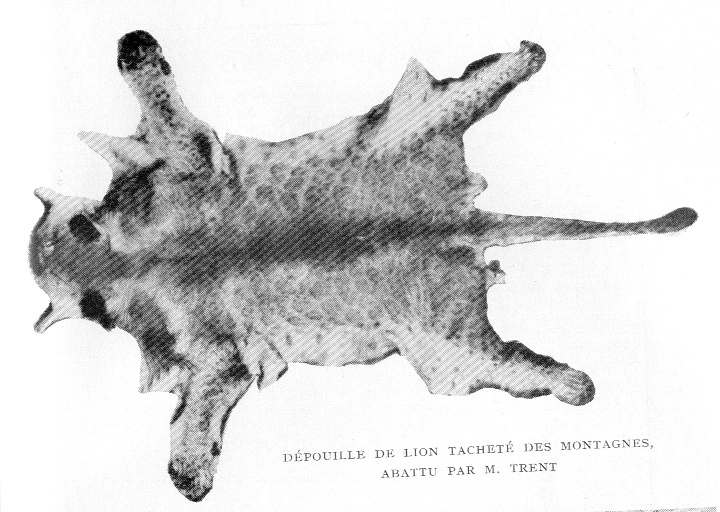Pages
▼
Friday, February 7, 2014
Post Revamp: the Marozi
Whether the Marozi exists is hardly a question. This mysterious cat, also called a "spotted lion," has been sighted in Africa for more than a century. Scientists have obtained Marozi dung, Marozi footprints, Marozi bones and even a Marozi skin. The creature has been measured, studied, and even preserved in a museum. There's little doubt that this cryptid is out there -- the real question is what it is.
Physically, the Marozi resembles an adolescent lion. It's slightly smaller than an adult lion would be, and tends to lack a mane. Most notably, however, it is lightly spotted like a leopard. Spotting is often observed in young lions -- but this trait fades with age. Only cubs have spots as prominent as the Marozi's. There are various theories about the identity of these spotted cats. Some belive they are a new lion subspecies, adapted for life in the mountains. Others say they are lion/leopard hybrids, or simply a mutant population like the King Cheetahs.
The hybrid hypothesis is fairly unlikely. In the wild, lions and leopards are competitors -- they hunt the same prey, and generally consider each other to be enemies. In captivity, the two species have been bred, but this has never been known to occur in nature. Furthermore, lion/leopard hybrids don't look much like the Marozi. They still often have manes, and their spots are more visible than a Marozi's should be. Is it possible that an occasional lion and leopard could interbreed in the wild? Yes. But this would never happen often enough to establish a population.
The mutation and subspecies theories are more likely. There are at least five lion subspecies -- another one isn't hard to imagine. And since lions are not overly common, it's possible that genetic drift could produce a different-looking group. A mutation, allowing spots to persist into adulthood, could occur in a single individual. If that individual had many offspring, and was part of a small population, its mutant coloration could spread through the entire group. Sooner or later, this mystery will be solved -- there's already Marozi DNA in London's Natural History Museum. All we need now is a motivated scientist and a simple genetic test. Soon the Marozi will be cryptid no more.
Read more about the Marozi:
http://www.newanimal.org/marozi.htm
http://www.lairweb.org.nz/tiger/marozi.html
http://www.messybeast.com/genetics/lions-spotted.htm
Image (of Marozi skin) from http://i12.servimg.com/u/f12/09/04/81/20/marozi10.jpg

No comments:
Post a Comment